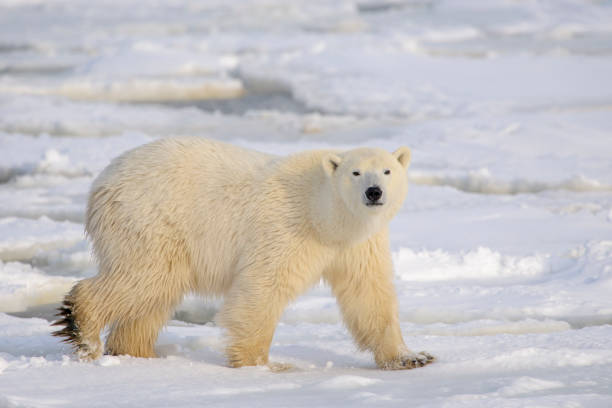Two polar bears attacked and killed a worker at a remote government radar site located in the Canadian Arctic, the facility’s operator reported.
The attack took place Thursday at the outpost on Brevoort Island, in Canada’s far northeastern Nunavut territory, said Nasittuq Corporation, the logistics company contracted to operate the site. This incident marks the second fatal attack to do with the endangered species since last year, however these attacks are generally rare.
The site is one of dozens of North Warning System outposts along Canada’s far north, forming a surveillance tripwire against aircraft incursions or cruise missile attacks. Its radar coverage spans over 3,100 miles from Alaska to Labrador in eastern Canada.
“An attack by two polar bears has resulted in the loss of one of our valued employees. Nasittuq employees responded to the scene and one of the animals was put down,” Nasittuq Corporation said Friday. “Our thoughts and prayers are with the family, friends, and colleagues affected by this loss,” the company added, saying it was providing support to the victim’s family and counseling services to other employees.
Last year, a polar bear killed a woman and her young son in in Wales, Alaska, just below the Arctic Circle. This marked the first fatal polar bear attack to happen in Alaska in thirty years, the only U.S. state the animals inhabit. In 2018, a 31-year-old father was killed in a polar bear attack while protecting his children in Canada. The same year, Norwegian authorities said a polar bear was shot and killed after it attacked and injured a guard who was leading tourists off a cruise ship on an Arctic archipelago.
While these attacks that sometimes result in the killing of the large white bears are few and far between, so is the polar bear species, which remains endangered due to the melting of Arctic ice as a result of global warming and industrial impacts.
A 2020 study found that the melting sea ice is starving polar bears, and that within the century, polar bears could be extinct, and declining genetic diversity increases the risk of extinction. In 2021, another study found the species was inbreeding to survive. The receding ice is one reason polar bears come into more frequent contact with humans, as they search for food.
The IUCN’s last estimate found there are about 26,000 polar bears worldwide. A projection of sea ice in the archipelago, supported by WWF, shows that much of the region is facing significant ice loss in the coming decades. Global polar bear numbers are projected to decline by 30% by 2050.












